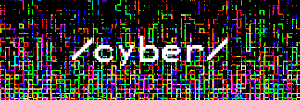The Singularity is maybe not happening right now - but, weirdly, we are in the "Age of Spiritual Machines" as predicted by Ray Kurzweil at nearly a perfect space on the timeline he laid out.
Kurzweil isn't right about a lot. He predicted that the doubling rate for semiconductors would increase instead of plateauing in the 2010's. His guesstimates put the cost of (again, his estimates) sufficient gross computing to equal to a human brain in degree to $1000 in 2019. I can't say anything with authority about how he came to his figures, but whatever he claims, it's very unlikely that you can get an equal amount of general computing power for that price IRL.
That said, he does get kudos for some of the concepts he outlined. The "Age of Spiritual Machines" began in 2018.
https://arxiv.org/pdf/1802.07740.pdf
These guys tried applying the complex pattern-discerning properties of the current raft of neural network tools to a specific task: understanding the actions of a separate program. They get moderately into detail into their methods, but the goal was to simulate the ability of humans and other very intelligent animals to develop a theory of mind(ToM) for outside entities based on an understanding of what is stimulating the entity and past reactions to stimulus. We use our ability to form a theory of mind for lots and lots of things, since our evolutionary background included a lot of social aggression in small groups where understanding how someone else would react to a situation gave strategic advantage. In humans, ToM is hypertrophied to the point that we assign mindedness to nearly any phenomena too complex to model directly. Anthropomorphization of the non-furry kind is what it's called when we treat something that isn't people like it is.
Dudes succeeded. Their Tomnet project is capable of developing independent models of behavior for multiple agents interacting in a simulation space. (Read the fucking paper, Shinji) It can handle multiple levels of complexity. It crrectly deduces rough statistical models for brownian/randomly-acting agents. It extrapolates a model of the process being used by algorithmic-following agents. It develops a statistically-weighed model of the kinds of behaviors chosen by agents controlled by another neural network with complex behavior.
But, what sets Tomnet apart from many animals, including human toddlers and autists (reeeeeeee!), is its ability to correctly infer when an agent itself has an incorrect model of the world and Tomnet makes a correct prediction of the agent's incorrect acts. The test for this in people is called the Sally-Anne Test (https://en.wikipedia.org/wiki/Sally%E2%80%93Anne_test). Humans under four years old, and slightly older humans with autism, cannot correctly predict behavior in others where that other's information about a situation differs from their own.
This is pretty goddamn big in terms of achievement. When I called it the "Age of Spiritual Machines", the theory of mind is the basis for religious thoughts. If you start to think of the world as just another person to be understood, you imbue it with a sense of purpose and other crap. It's just a lot of cultural development and discussion to get that shaped up into a religion.
We literally have tools that could allow us to make machines to look for God in the world. It's not an earth-shattering and obvious change to everything, but when minds look back to see when it all began, ToMnet will be the machine equivalent of the first animal that correctly intuited the tactics of prey to capture them. Not sentient, but on the line that can end in sentience.
